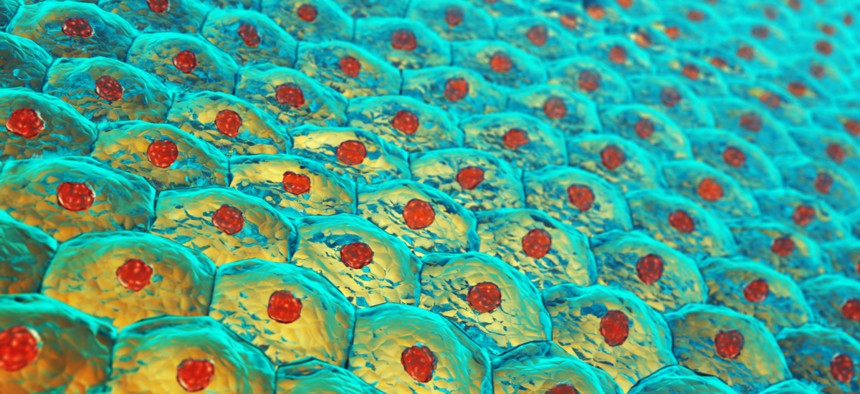IARPA Wants to Identify Criminals From Their Skin Cells

nobeastsofierce/Shutterstock.com
The goal isn’t to replace DNA analysis but rather add another technology to forensic analysts’ toolbox.
The U.S. intelligence community is working to build technology to identify people based on markers they leave on the objects they touch.
And this isn’t your run-of-the-mill fingerprint scanner.
Every time you touch something, you leave behind skin cells packed with proteins that are as unique to you as your DNA. And it's those proteins the Intelligence Advanced Research Projects Activity believes could lead to the next big breakthrough in forensic investigations.
IARPA recently launched the Proteos program, which will explore ways to use proteins extracted from skin cells to connect individuals to crime scenes and other forensic evidence.
While DNA is today considered “the gold standard” for forensic science, crime scene investigators often can’t recover enough intact DNA to definitively identify the people who were there, IARPA said in the program announcement. And when all investigators have to work with are touch samples on bullet casings and other assorted surfaces, finding DNA becomes even more difficult.
But analyzing so-called “genetically variable peptides” found in skin cells could provide the additional evidence needed to tie a specific person to a location or item. In other words, the goal isn’t to replace DNA analysis but rather add another technology to forensic analysts’ toolbox.
“Capabilities developed within the Proteos program can provide another tool for forensic researchers in cases were DNA is degraded or found in small quantities and increase the likelihood of assigning identification using proteins associated with touch samples,” Proteos Program Manager Kristen Jordan said in a statement.
The program is divided into two research tracks: one will seek out genetically unique markers in skin cells that investigators can use to identify people, and the other will build a mechanism for extracting proteins and DNA from touch samples.
IARPA selected three teams or researchers—University of Washington, GE Global Research and Signature Science—to participate in the program. The National Institute for Standards, Johns Hopkins Applied Physics Lab and Lawrence Livermore National Laboratory will serve as IARPA’s test and evaluation team and ensure researchers meet performance metrics.
The first research phase will run through July 2019, and the program is scheduled to wrap up by early 2021, according to IARPA.






